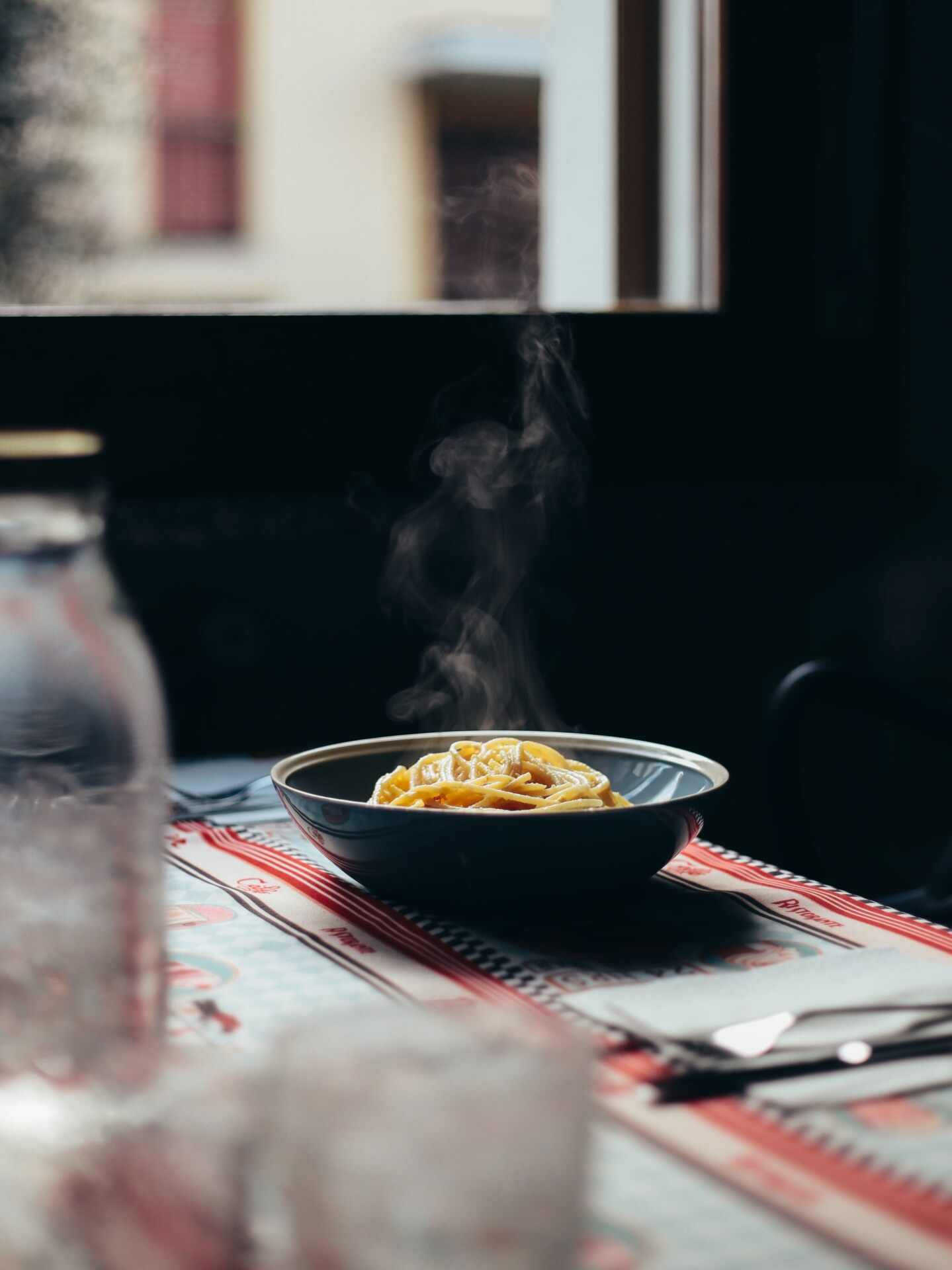Italy is divided into 20 regions, each with its own distinct character, dialects, traditions, history, and, of course, cuisine. With “farm-to-table” and “zero km” food not so much a trend but a longstanding way of life in this country, over time each region has developed its own signature dishes based on the best ingredients its unique terroir has to offer. Some, like Lombardia’s pizzoccheri and Sardinia’s “Su Filindeu” pasta, are slowly dying out; while others, such as Trentino’s Germanic canederli dumplings or Venice’s famous sarde in saor, remain firmly within regional borders. Certain regional dishes, however, have shot to global fame, and taken on a life all of their own.
Case in point: pasta alla carbonara, cacio e pepe, and to a lesser extent, amatriciana. AKA, the “holy trinity of Roman pastas”, and the subjects of a current global obsession. You needn’t have even visited the Eternal City to be well-acquainted with these iconic dishes: they’ve been replicated (read: attempted), reworked, and reinterpreted the world over, countless times and to varying degrees of success–and all the while, veritable digital wars are waged over each recipe, iteration, and supposed “rule”.
But forget cream and pancetta (sacrilege!): the real deal is all about Lazio’s two star ingredients, salty Pecorino Romano cheese and fatty, fabulous guanciale (cured pork jowl). Together with eggs, they make carbonara; with the addition of tomato, it’s amatriciana, while for cacio e pepe it’s just the cheese with black pepper–plus a few traditional cooking tricks the Romans have up their sleeves too. However, those who have visited Rome IRL will know all too well that there’s something missing here; a dish inexplicably overlooked by the international contingent.
Because what do you get when you simply combine the two ingredients without the addition or omission of anything else? That, dear friends, is the wonder known as gricia–the unsung hero of Roman pasta, the perfect accompaniment to al dente rigatoni, the invisible fourth arm of the “Holy Trinity”, and, indeed, the predecessor of them all.
As with most Italian dishes, the origins of pasta alla gricia are not straightforward. Some say it comes from the tiny town of Grisciano, not far from Amatrice, while others believe it was first made by shepherds in the region who would only carry a few local ingredients with them as they set out with their flock for days on end. Another hypothesis points to the ancient Roman word gricio, the name given to sellers of common foods–the idea being that “pasta alla gricia” was made using only the simple ingredients they sold. Certain historians even suggest the recipe might date as far back as the 5th century AD.
What we do know is that gricia certainly came before carbonara, which wasn’t invented until the 1940s; and given tomatoes didn’t come to Italy until the 16th century, it pre-dates amatriciana too. Whether or not it came before cacio e pepe is still hotly debated (a real chicken-egg situation)–but gricia can still lay claim to being one of the OGs of Roman cuisine.
It’s hard to imagine why gricia hasn’t enjoyed the same limelight as its superstar counterparts, given it’s been around for so much longer. It’s just as–if not more–delicious, with its crisp guanciale atop an indulgent, creamy sauce made from melting down the peppery fat and adding in heaps of pecorino and a hint of starchy cooking water. In fact, for many born-and-bred Romans it actually trumps the others as their go-to comfort food. With just two common ingredients, it’s easy to whip up at home, and boasts quasi-magical hangover curing powers to boot. It’s also less likely to plunge you into a full-on food coma than its significantly richer Roman pasta peers–contrary to popular belief, gricia is not simply cacio e pepe + guanciale, but an altogether lighter dish thanks to a lesser cheese quantity and a bit of meaty contrast. All this really should make it a recipe for global success–and yet…
The only remaining explanation, then, is that the Romans might have purposefully kept gricia to themselves. No possible foreign contamination with cream, pancetta, or worse. Something feasible when the only restaurants serving it are the traditional trattorias in town–and local ingredients do always taste that much better when they’re in situ. By confining the glorious gricia to its hometown, the Romans are saying: this is ours, we do it best, and no one can take it away from us. Having already lost *that* high-profile provenance war (newbies: don’t bring up Neapolitan pizza in the vicinity of a Roman), they’ll be damned if they’ll give up this one. And as for pasta alla gricia‘s many admirers–well, we’ve just got yet another reason to go back to Rome for more.

Courtesy of Armando Al Pantheon
THE BEST PLACES TO EAT PASTA ALLA GRICIA IN ROME
Armando Al Pantheon
The grande dame of classic Roman cuisine, Armando Al Pantheon has been turning out top-notch traditional recipes since 1961–including the perfect spaghetti alla gricia.
Osteria Bonelli
It’s well worth venturing beyond the historic centre to the Pigneto neighbourhood for a plate of fresh, homemade tonnarelli alla gricia at this well-priced, locals’ favourite.
Da Enzo al 29
Set in the heart of Trastevere, the trendy Da Enzo al 29 has remained practically unchanged for decades–and therein lies its charm. The queues might be long, but the impeccably made rigatoni alla gricia make it well worth the wait.
Cesare al Casaletto
This foodie hotspot is in the pretty residential neighbourhood of Monteverde, and run by a charming couple who grew up in the Lazio countryside. Quality, small-producer ingredients are king here, and recipes as traditional as they come. People come from all over for the gloriously rich gricia that’s served with your pasta of choice, from rigatoni and spaghetti to homemade gnocchi.

